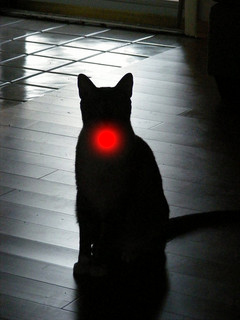Food for thought on the new iodine-restricted diet for feline hyperthyroidism
Seth Wallack DVM, DACVR
Time will tell. While we are not averse to trying it out, only time will tell if this new round of iodine-restricted diet will have better success than what has been tried in the past. Iodine-restricted diet to treat hyperthyroidism was tried unsuccessfully 40 years ago, and what researchers found back in the ’70s was that the iodine restriction dropped the T4 level for one month but that the level rose again.
Education to prevent misconception and misuse by pet owners is critical. Another concern is the misconception by owners that they are giving a medication. They need to understand that this is a restriction technique and that more is not better. So if their cat shows improvement in the first month but then starts to relapse, feeding more food is not the answer. Which leads to a third concern…
Continued growth of the goiter is likely. If the diet was used in younger cats and they didn’t develop hyperplastic tissue due to the restriction, this would be great. But cats receiving y/d already have hyperplastic tissue, and this tissue will continue to grow. This is the same reason the methimazole dose needs to be increased over time—there is more tissue to treat. However, unlike methimazole, feeding less y/d is not an option.
Palatability and multi-cat households are obstacles. These concerns have been raised to us by DVMs. First is palatability. Food is essential to minimize weight loss in a metabolically overactive patient, and if the cats don’t like the food, they could become cachexic quickly. Second is trying y/d in a multi-cat household can be tough. Again, this is a restriction therapy, so it is important that y/d not be left out for free feeding.
The bottom line is it that doesn’t hurt to try an iodine-restricted diet as long as your clients understand the limitations and what to look out for.

We’d love to hear your comments about y/d, so please email our staff veterinarian,
Dr. Rene Garcia ([email protected]), with your input and experience with it.
To read more about y/d and feline hyperthyroidism, here is an excellent overview and a blog forum
by one of the foremost experts in feline hyperthyroidism, Dr. Mark Peterson.
Other Posts
Feline Thyroid Scan Image Comparisons
I-131 Therapy CE Seminar Presentation
Real-Time Ultrasound is now streaming!
Video: Feline CT with Virtual Rhinoscopy
Q&A: VICSD Off-Site Imaging
3-D CT & MRI Videos
Abdominal Ultrasound CE Seminar Presentations
DICOM CE Seminar Presentation
Free Download: VICSD Guide to Advanced Imaging




